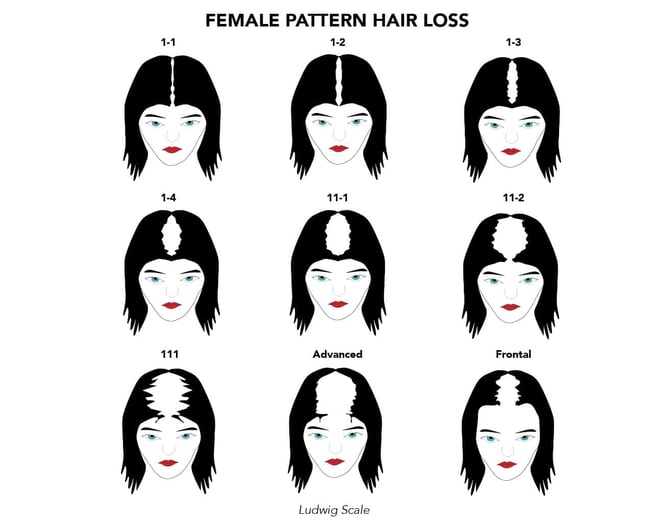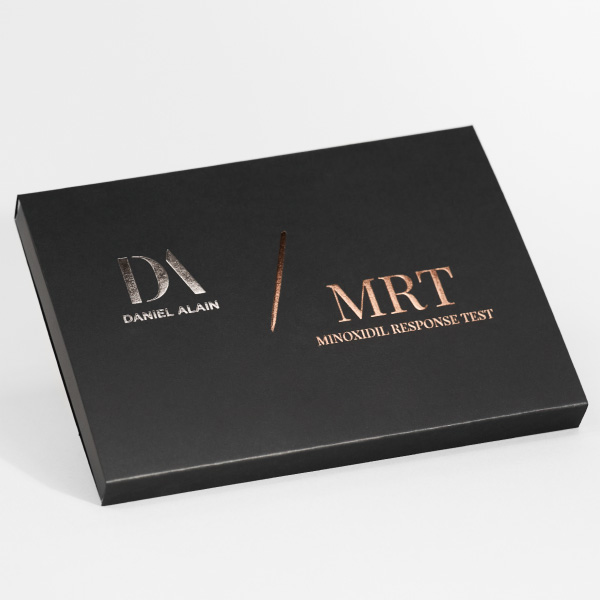Why Isn’t Minoxidil Working for Me? 3 Reasons Why

Maybe you heard about Minoxidil, commonly known as Rogaine®, and decided to give it a go, hoping to see your hair regrow. Minoxidil is the most popular hair loss treatment on the market and the only FDA-approved topical treatment for women and men. Now it’s been months and still nothing. You’ve been waiting patiently and now you’re starting to wonder whether you’ll ever see results from Minoxidil.
At Daniel Alain, we know how stressful hair loss can be. Our founder has been in the hair loss industry for over twenty years. Hair is often closely tied to identity. When you start losing hair, you may feel like you’re losing a part of yourself and your confidence. You don’t have time to waste when it comes to treating your hair loss. So when you’ve tried a product for months and you still haven’t seen results, you may start to feel discouraged.
At this point, you may be ready to throw the towel in. Why isn’t Minoxidil working for you?
In this article, we’re going to go through some common reasons why Minoxidil may not be working for you. At the end of this article, you’ll have a better idea of whether Minoxidil will or will not work for you.
Reason 1: You Aren’t Using it Consistently
Results from Minoxidil don’t show up overnight. They don’t even show up in the first couple of months of usage. Typically, it takes 6-9 months to see the initial results of a Minoxidil treatment. However, you’ll only see these results if you use Minoxidil twice a day, every day. Minoxidil is considered a drug and like any drug, it will only work with persistent and consistent application.
If you are inconsistent about applying Minoxidil or are only applying it once a day, you may be reducing the efficacy of the drug. While skipping a dose here or there is totally normal and usually not detrimental if you’re not applying Minoxidil as instructed, you are not going to see results.
Reason 2: You Don’t Have Genetic Hair Loss

While Minoxidil is often seen as a solution to all hair loss, it is only FDA-approved to treat androgenetic alopecia or pattern baldness. This type of hair loss is primarily found at the top and back of the scalp. It is not simply a receding hairline or patches of hair loss. As the name implies, this is a genetic type of hair loss. If you are experiencing hair loss from something else, Minoxidil will not work.

Reason 3: You Don’t Have Enough of the SULT1A1 Enzyme
Until recently, most people who used Minoxidil assumed it would work for them. It was known that Minoxidil could work and work very well, however it had mixed results. What wasn’t known was whom Minoxidil would work for considering only 50% of men and 30-40% of women would typically see results.
In 2013, the research and development team at the Daniel Alain discovered the novel SULT1A1 enzyme. They predicted that more of this enzyme would increase the likelihood of Minoxidil being an effective treatment for androgenetic alopecia.
In 2014, they confirmed the hypothesis that in order for Minoxidil to work, a sufficient amount of the SULT1A1 enzyme needed to be present on the scalp in order to create the ideal environment for Minoxidil to convert into its active form. If Minoxidil isn’t working for you, it may be because you do not have enough of the SULT1A1 enzyme needed for Minoxidil to be an effective treatment.
Now You Can Determine If Minoxidil Could Work For You
After reading this article, you now know why Minoxidil may not be working for you. However, you may be unsure what to do next without a definitive answer as to whether you have genetic hair loss or enough of the SULT1A1 enzyme. You don’t want to waste your time and money on a treatment that won’t work but if it can, it may be the most effective hair loss treatment. What can you do?
The Daniel Alain research and development team created for them through a non-invasive, simple test. The test was found to be 95.9% accurate at identifying individuals who would not respond to Minoxidil.
The resulting Minoxidil Response Test has changed the hair loss game. Rather than waiting for results that may never come, you can get an answer to the question, “will Minoxidil work for me?” within 14 days of sending your hair samples into the Daniel Alain CLIA-certified lab.
With Daniel Alain’s Minoxidil Response Test, you can take control of your hair loss by getting answers to help you find the most effective treatment for you, in a shorter period. If you’re a responder, you can confidently proceed with Minoxidil treatments, knowing a little more patience will pay off. If you’re not a responder, you can invest time and energy into finding another treatment.

Take the Minoxidil Response Test to take the guessing out of treating your hair loss.
All product and company names are trademarks ™ or registered marks ® of their respective holders. Use of them does not imply any affiliation with or endorsement by them




